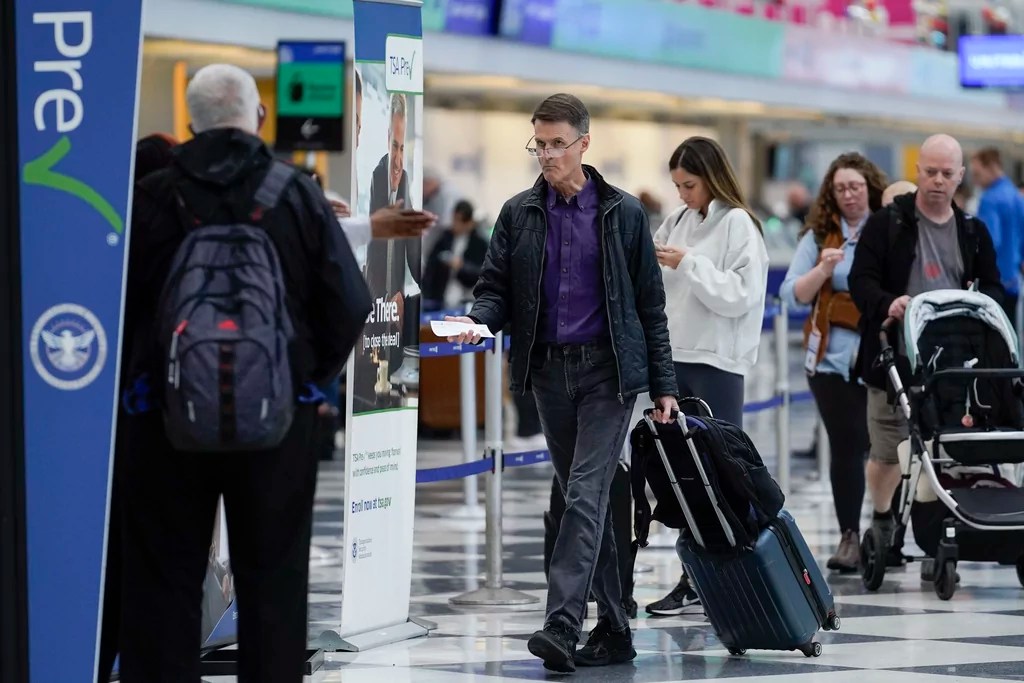


This Fourth of July weekend is projected to break travel records as nearly 6 million passengers board flights and millions more take the roads to reach their holiday destinations.
Approximately 71 million travelers are expected to venture 50 miles or more from their homes during the Independence Day holiday period, reflecting a 5% increase compared to 2023 and an 8% increase over 2019, according to the American Automobile Association (AAA).
“With summer vacations in full swing and the flexibility of remote work, more Americans are taking extended trips around Independence Day,” said Paula Twidale, senior vice president of AAA travel.
“We anticipate this July 4th week will be the busiest ever with an additional 5.7 million people traveling compared to 2019.”
AAA anticipates a record-breaking 60.6 million people will travel by car this year, surpassing last year’s estimates by 2.8 million travelers.
This year, gas prices are lower nationally, with the current average at $3.491 per gallon as of Monday, down from $3.538 during the same period last year, according to AAA’s gas price tracker.
However, in Washington D.C., the average price for a gallon of regular gas was $3.665 on Monday. This marks a decrease from the $3.701 per gallon recorded a month ago.
People can find cheaper gas by using the GasBuddy app to locate the best-priced gas stations near their location.

Over the past few years, D.C. has experienced a 182% increase in fatal car crashes on this holiday compared to other days.
According to INRIX, a provider of transportation data and insights, the worst times to travel by car before and on July 4th are between 2pm and 7pm.
They recommend morning departures for drivers and advise travelers returning on Monday, July 8th to avoid rush hour traffic both in the morning and afternoon.
“Drivers in large metro areas can expect the worst traffic delays on Wednesday, July 3rd, as they leave town, and Sunday, July 7th, as they return,” said Bob Pishue, transportation analyst at INRIX. “Road trips over the holiday week could take up to 67% longer than normal.”
| Date | Worst travel time | Best travel time |
| Tuesday, July 2 | 2:00 p.m. – 6:00 p.m. | After 7:00 p.m. |
| Wednesday, July 3 | 2:00 p.m. – 7:00 p.m. | Before noon |
| Thursday, July 4 | 2:00 p.m. – 7:00 p.m. | Before noon |
| Friday, July 5 | 11:00 a.m. – 4:00 p.m. | Before 10:00 a.m. |
| Saturday, July 6 | 10:30 a.m. – 2:30 p.m. | Before 10:00 a.m. |
| Sunday, July 7 | 2:00 p.m. – 8:00 p.m. | Before 11:00 a.m. |
| Monday, July 8 | 1:00 p.m. – 5:00 p.m. | After 7:00 p.m. |
Every year in D.C., there is an Independence Day parade early in the afternoon at Seventh Street and Constitution Avenue, causing road closures from 7th Street to 17th Street.
Later in the evening, the annual fireworks display further disrupts traffic, with closures extending from 14th Street to the Lincoln Memorial.
Between Friday, June 28 and Monday, July 8, the Transportation Security Administration (TSA) anticipates more than 28 million people will be traveling nationally, a 5.4% increase from last year’s Independence Day holiday numbers.
With an average price for domestic roundtrip tickets at $800, domestic airfare for the Fourth of July week is 2% cheaper than last year.

As a precaution, travelers are advised to arrive at airports two hours early, pre-book parking in advance, and opt for carry-on luggage instead of checked bags to save time and money.
CLICK HERE TO READ MORE FROM THE WASHINGTON EXAMINER
Over 4.6 million people are expected to travel by buses, cruises, and trains, marking a 9% increase from last year.
Cruise lines are offering summer deals amid high demand, particularly for Alaska cruises, making Seattle and Anchorage top domestic destinations this time of year.